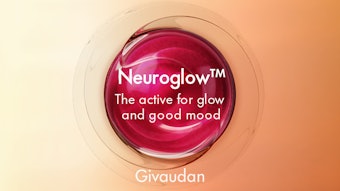An academic study of the pathway of UV-induced pigmentation may have created a safe tan for sunseekers. Scientists at the Dana-Farber Cancer Institute, Harvard Medical School, have begun research and evaluation of the compound forskolin, which they believe darkens skin pigmentation successfully without the use of self-tanners and without sun exposure. David Fisher, MD, PhD, director of the melanoma program in the department of medical oncology at Dana-Farber Cancer Institute, Harvard Medical School, led the research in Boston to discover what he hopes to be a safe alternative to UV exposure.
The Discovery
The major scientific breakthrough according to Fisher was that the target of UV rays was not found to be melanocytes but rather keratinocytes, which are superficial cells that lie next to the melanocytes.
“After you go out in the sun, UV exposure triggers keratinocytes to synthesize and secrete melanocyte stimulating hormone (MSH). The MSH then activates a receptor protein on the surface of adjacent melanocytes, which in turn activates an enzyme within melanocytes to trigger the melanin synthesis cascade,” said Fisher. People with red hair usually have a variant form of the receptor protein on the melanocyte surface, and their variant form often is unable to respond to MSH, which explains why red-headed individuals rarely tan.
The researchers discovered that they could bypass the variant receptor with a drug that penetrated melanocytes and directly activated the key enzyme, thereby creating pigmentation in red-haired mice.
The way the researchers chose to target the enzymes in the melanocytes was through the topical compound forskolin, a derivative of the plant Coleus forskoleii. Although the researchers chose to use forskolin, according to Fisher, there may be other compounds capable of targeting the enzyme.
“Forskolin is simply the first drug we chose to test. This portion of the pathway has many drugs that are capable of activating it. The first one is rarely the best one,” added Fisher. Researchers reportedly are in the process of systematically testing and optimizing different drugs. According to Fisher, they have not yet concluded which drugs are both effective and safe for human use.
Application
Red-haired mice were chosen for the experiment. “We chose to use red-haired mice because they have a block on the surface protein of the melanocyte, which hinders their ability to tan,” said Fisher. The researchers hypothesized that the skin of the red-haired mice would become tan with repeated application.
Within a couple of days, the mice’s pigment darkened. “We examined the pigment in the skin of the red-haired mice and it was indistinguishable from the pigment in naturally darker-haired mice,” added Fisher, which demonstrated to the research team that they had found a way to increase pigment without UV exposure.
Testing
The researchers have been testing the compound in a variety of situations. They also are testing the compound to determine its safety. Part of this process includes testing to determine whether the compound helps to protect against sunburn, formation of DNA mutations or skin cancer.
“The red-haired mice were exposed to UV light and they exhibited the same protection as mice that were born black-haired,” added Fisher. The mice exposed to UV light that had been treated with the compound also had a decreased incidence of skin cancer. If this approach is determined to be effective and safe for human use, protection for fair-skinned individuals may be more easily achieved with the application of this topical treatment.
The tan induced by the application of the compound, however, fades in time. The half-life of the compound in mice is two weeks, which according to Fisher, is similar to the rate of a tan’s fading in most humans.
In determining whether the compound will be safe for human use, an important challenge is the delivery of the drug. “The biology appears to operate in a similar way to human skin, although additional work is ongoing. So far, we believe that a major difference between the tan in mice and in humans is structural: human skin is thicker, and it is essential to deliver the drug to the appropriate cells,” said Fisher. Testing on human skin samples is underway. Fisher believes that the compound’s chemical structure could remain more stable in human skin and therefore, the tan could last longer.
A Look Ahead
Fisher looks to the future of the compound as a potentially safe tanning method. The researchers must first determine that the compound is safe for human exposure. “Formal toxicology studies have not been done,” said Fisher, who plans to accomplish toxicity studies in the near future. Once human safety is determined, Fisher believes the process will help numerous individuals. “Any condition of photosensitivity is likely to be better tolerated with this kind of strategy, though careful studies will be necessary to examine the degree of safety and benefit,” said Fisher. He also added that the incidence of skin cancer could be diminished, if the compound is proven safe for human use and substituted in place of UV light exposure. Fisher hopes that, if the compound is determined safe, the sunless induction of pigmentation could impact public health in two ways: 1) direct protection of the skin; and 2) diminished sunseeking behavior.










